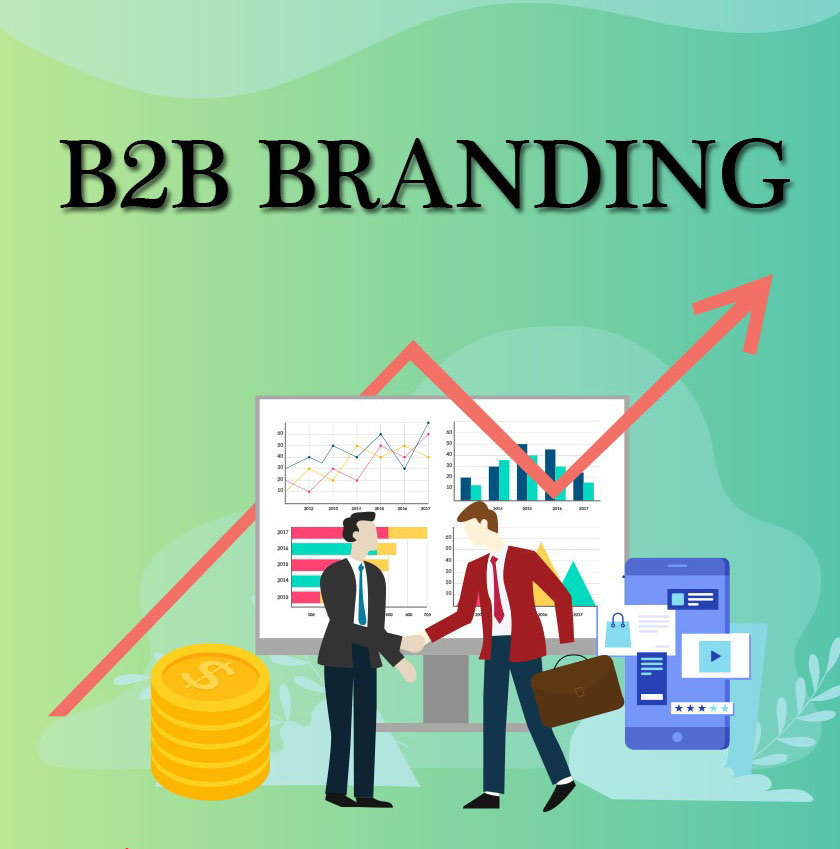Published on July 12, 2019

Brand strategies are core to the B2C Business. In a market flooded with competition and products with attributes of little differentiation, it’s the Consumer’s perception about the Product or the Organization that plays a significant role. Hence the leading actions to raise the Brand equity purely focus on Branding. Giant B2C Organizations like Apple, Samsung, Micromax, Sony, LG are working relentlessly towards pursuit of Branding.
When it comes to B2B, unlike B2C, the buyer is often not an individual, but a group of people from different Departments within an organization. Typically, personnel from Materials, Stores, R & D, Quality formulate this Group. Also, in many Businesses, especially true to Industrial Marketing, the Product or the Offering is customized to suit the user needs. Hence the parameters of Consumer perception vary greatly in B2B, and these often become person-specific. Criteria like price, specifications, delivery time, installation and commissioning, sustained performance, availability of quality spares become key to Customer satisfaction, perception – and thus for Branding too.
A brand has grown to mean much more than a logo. Branding begins with the consistency of presentation that becomes the identity of a company. Beyond this it represents a consistent value system that a company presents to the world and that is seen to be that company’s way of doing things. On this branding ladder, the challenge is to move beyond the graphic symbols and metaphors to get to the more difficult cultural uniformity that customers and potential customers recognise and value.
A good test of branding uniformity is to collect business cards from everyone in a company and lay them on the table. Do the same thing with all pieces of stationery including compliment slips, letterheads and labels. Put all the company’s adverts and sales literature on the table. What is the uniformity in layout and presentation? What variable images do they communicate? Do the presentations look messy and all over the place? The enemy of branding is the well-meaning person within a company who believes that their concept of a design, image or brand is superior to all others. Within all of us there is a desire to fiddle with brands and layouts and so potentially, everyone is a branding terrorist. Whenever you see a good and strong brand you can be sure that behind it there will be a brand champion who is prepared to be unpopular if necessary in enforcing the branding rules of that company.
The starting point of any brand strategy research is to work out what the company stands for. What is the single most important value that the company presents to the world? Think of it this way – if the company’s back is to the wall, how would it react to a demanding customer? And, now think through every contact with the outside world and question whether or not it presents these values. What does it sound like when the phone is answered? What consistency of messages comes from the appearance of the sales and technical team? Do the cars that people drive when they visit customers, do their clothes and do the words that come from their mouths correspond with the values of the company? Does the response that a company makes to a customer or potential customer fit with the position it thinks it holds. These are the acid tests that a company needs to apply to determine where it sits on the B2B branding ladder.
Posted in: PGDM (AICTE Approved) Admission 2020


Which is Better: MBA or PGDM for Government Jobs?
Published on March 25, 2021
IS PGDM EQUIVALENT TO MBA DEGREE? HOW TO CHOOSE A COURSE?
Published on January 16, 2021
PGDM in Marketing: Career, Jobs, Syllabus, Scope, and Salary
Published on February 24, 2021
WHAT ARE THE CAREER OPPORTUNITIES AFTER PGDM? JOBS AFTER PGDM
Published on January 20, 2021
MBA or PGDM? Which course should you choose?
Published on January 6, 2020